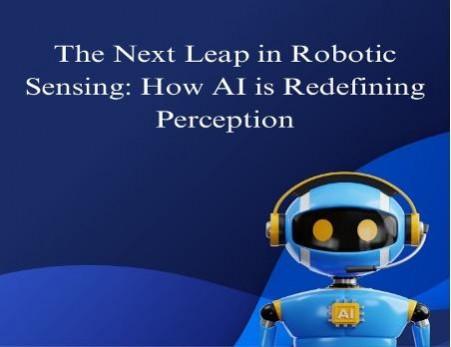
A leading researcher in robotic sensing, Subhagato Dutta explores the transformative role of generative AI in robotic perception. His work highlights how artificial intelligence is revolutionizing robotic adaptability, making machines more efficient in complex environments.
The Challenge of Traditional Robotic Vision
For decades, robotic vision has relied on feature extraction methods like SIFT and SURF, which, while effective in controlled environments, struggle with dynamic conditions such as changing lighting or occlusions. These limitations have hindered the deployment of robots in real-world applications where environmental unpredictability is a constant challenge.
Generative AI: A Paradigm Shift
The introduction of generative AI, specifically multimodal transformer architectures, has significantly improved robotic perception. By processing RGB images, depth maps, and proprioceptive data, AI-driven robots can make more context-aware decisions. Unlike traditional models that rely on predefined feature sets, these advanced systems dynamically interpret and respond to environmental variations, resulting in up to a 42% improvement in object recognition accuracy.
Enhancing Real-Time Decision-Making
Advancements in AI-driven robotics improve real-time decision-making. Generative AI models like RT-1 achieve a 97% success rate in object manipulation, reducing errors by 40% in dynamic environments where traditional vision systems fail.
Multimodal Integration: The Key to Robust Perception
Modern robotic systems leverage multimodal sensor fusion, integrating data from cameras, LiDAR, and depth sensors to create a comprehensive environmental model. This fusion improves accuracy in complex environments, ensuring that robots can navigate and manipulate objects with higher precision. For example, when tested in industrial settings, AI-enhanced robotic systems exhibited a 27% improvement in object detection accuracy compared to single-sensor models.
Edge Computing: Bringing AI to the Frontline
The real-world deployment of AI-powered robots necessitates efficient processing solutions, and edge computing has emerged as a game-changer. By handling data processing closer to the source, edge computing minimizes latency, making real-time decision-making more practical. Optimizations such as pruning and quantization have reduced AI model sizes by 30%, ensuring smooth operation on edge devices without compromising accuracy.
The Industrial Impact: Efficiency and Cost Savings
AI-driven robotic sensing is already making waves across industries, particularly in manufacturing, healthcare, and logistics. In manufacturing, AI-powered systems have enhanced quality control processes, reducing defect rates by 10% and saving millions annually. Similarly, in healthcare, AI-assisted surgical robots have improved procedure accuracy by 18%, leading to better patient outcomes. In logistics, autonomous warehouse robots equipped with AI-driven vision systems have increased sorting accuracy to 93%, cutting operational costs significantly.
Addressing Challenges: Adaptability and Ethics
Despite these advancements, generative AI in robotics faces several challenges. High computational demands require further optimization to balance performance and energy efficiency. Additionally, ensuring AI models adapt seamlessly to new environments without extensive retraining remains a significant hurdle. Ethical concerns, particularly in sensitive applications like healthcare, emphasize the need for stringent data security measures and transparency in AI-driven decision-making.
The Future of Robotic Sensing
The next phase of innovation in robotic sensing is expected to focus on neuromorphic vision systems, adaptive AI models, and distributed sensing networks. These technologies will further enhance robot perception, enabling seamless human-robot collaboration and expanding AI's role in automation. Research is also exploring energy-efficient sensor designs to support prolonged autonomous operations, ensuring AI-driven robots become more sustainable and scalable.
In conclusion, generative AI is redefining the landscape of robotic sensing, making robots more intelligent, adaptable, and efficient. As these technologies continue to evolve, they will unlock new possibilities across industries, from advanced manufacturing to precision healthcare. Subhagato Dutta's work in this field provides a glimpse into a future where AI-powered robots seamlessly integrate into human environments, revolutionizing automation as we know it.

















